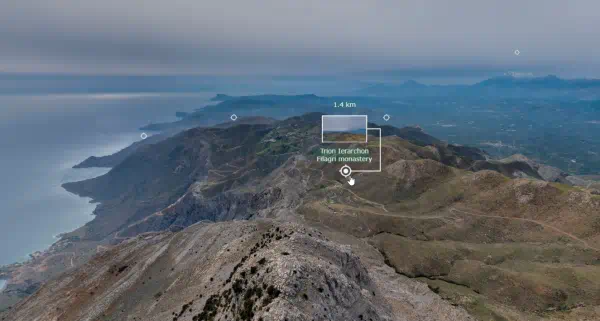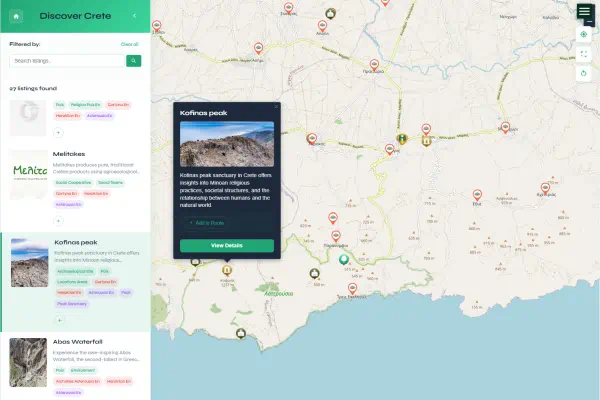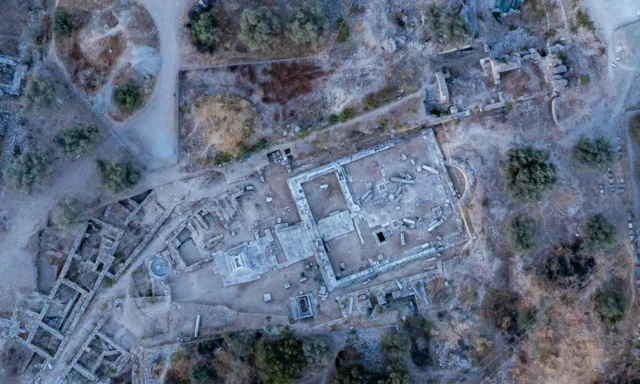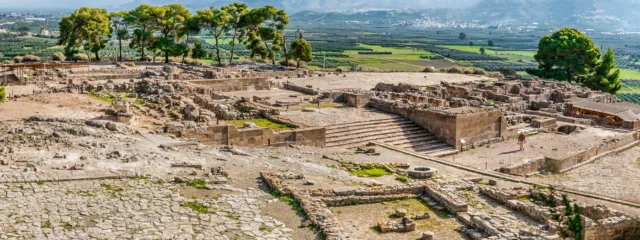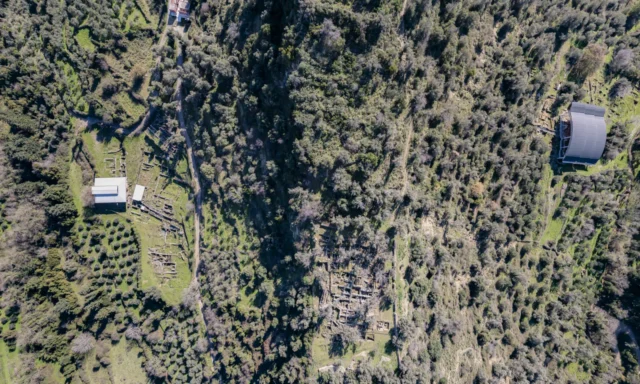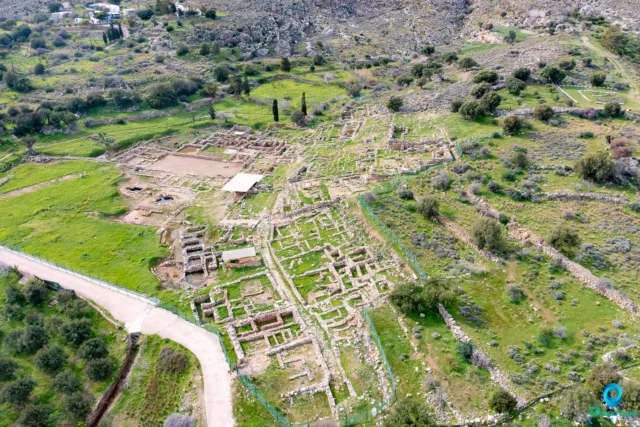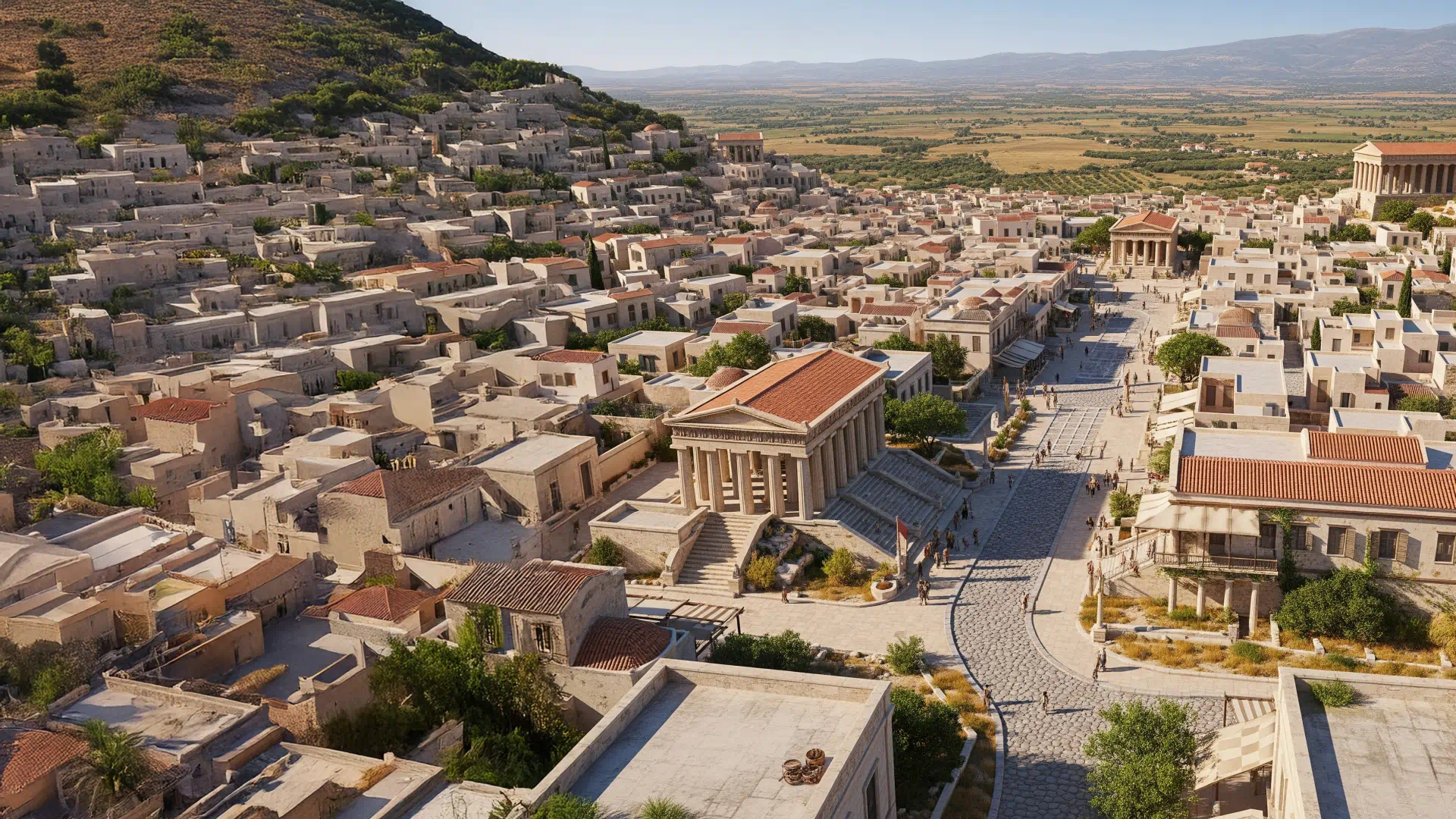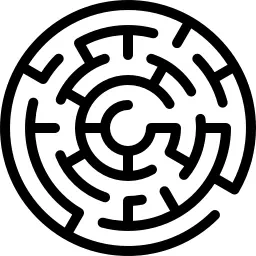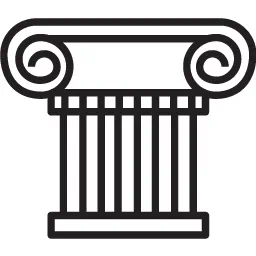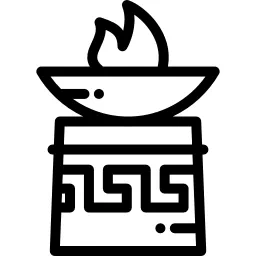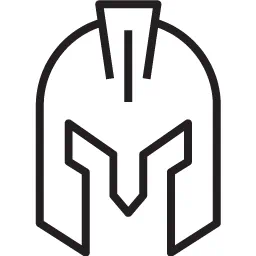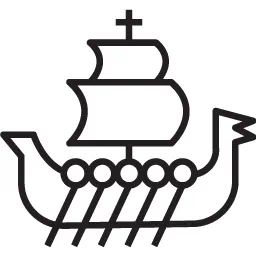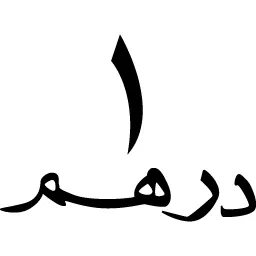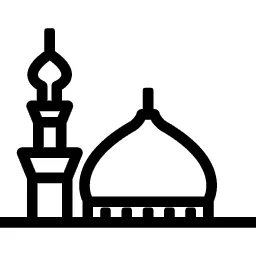The Archaic Renaissance: The Rise of the Cretan Polis (c. 750-480 BCE)
The period from the 8th to the early 5th century BCE witnessed a remarkable cultural and political flourishing on Crete. The nucleated settlements of the late Dark Ages crystallized into a landscape of independent city-states, which developed unique social institutions and legal codes while becoming pioneers in the artistic developments of the broader Greek world.
A Landscape of City-States
By the 7th century BCE, the process of population concentration was complete, with many of the old high-altitude refuge sites being abandoned in favor of larger urban centers that became the historically attested poleis. Homer’s description of Crete as an island of “ninety” or “a hundred cities” reflects this new, densely populated political reality. Major poleis such as Knossos, Gortyn, Lyttos, Praisos, and Kydonia dominated their respective regions, their territories often small and fiercely contested, leading to a state of endemic warfare that would characterize the island for centuries. The island’s rugged, mountainous terrain served to both isolate these city-states and define the boundaries of their rivalries.
The political structure of these poleis was typically aristocratic or oligarchic. Power was concentrated in the hands of a council of elders (boule), drawn from the leading families, and a board of chief magistrates known as the kosmoi. A citizen assembly (ecclesia) existed but generally had limited powers, primarily to ratify the decisions of the elite. This constitutional framework, famously analyzed by Aristotle, bore a strong resemblance to that of Sparta, which tradition held was derived from the more ancient Cretan model.
A Society Forged in Dorian Tradition
Archaic Cretan society was built upon a rigid social hierarchy. At its apex was a land-owning aristocracy of citizen-warriors, presumed to be of Dorian descent, who monopolized political rights and military functions. The agricultural economy was sustained by a large dependent population, comprising various classes of serfs (known generically as perioikoi) and chattel slaves, who worked the lands of the elite.
The life of the male citizen was structured by two central institutions. The syssitia (or andreia) were obligatory communal meals where all adult male citizens dined together. These messes were funded by a tithe on agricultural produce from both public and private lands and served as a powerful mechanism for fostering social cohesion and reinforcing the collective identity of the warrior class. Complementing this was the agelai (literally “herds”), a system of state-supervised education in which boys and youths were raised together in bands. This training was intensely militaristic, involving hunting, athletic contests, and mock battles, designed to instill martial values, discipline, and unwavering loyalty to the group.
The Lawgivers of Crete: The Gortyn Code
Crete’s reputation in the ancient world as a fount of law and good governance (eunomia) is best exemplified by the Great Code of Gortyn. Discovered in the 19th century inscribed on the stone blocks of a public building, this text from the 5th century BCE is the most extensive and complete body of Greek law to survive from before the Hellenistic period. Written in the local Dorian dialect using an archaic boustrophedon script (where lines are read in alternating directions), the code reflects legal traditions that were centuries older.
This legal code is not a theoretical document but a practical social blueprint for maintaining a stable, yet deeply unequal, society. The rigid legal distinctions it draws between social classes were an essential mechanism for preserving the power and economic dominance of the citizen elite over the much larger subjugated population. The laws on property and inheritance, for instance, ensured that the primary source of wealth and status—land—remained within the control of the ruling class. The code thus functioned as the primary ideological and practical instrument for managing the long-term consequences of the Dorian settlement, codifying the new aristocratic order and preventing social mobility.
The code’s provisions offer an unparalleled window into the structure of Cretan society, regulating matters of family law, property, and personal status with meticulous detail.
Key Provisions of the Gortyn Code
Legal Area | Law Concerning Free Citizens | Law Concerning Serfs (Perioikoi) | Law Concerning Slaves | Notes/Significance |
Rape | Fine of 100 staters for raping a free man or woman. | Fine of 5 staters for raping a male or female serf. | Fine of 2 staters for raping a male or female slave owned by another. | Establishes a clear monetary value for personal violation, scaled dramatically by social status. The fine for assaulting a free person is 20 times that for a serf. |
Adultery | Fine of 100 staters for the male adulterer caught with a free woman in her father’s, brother’s, or husband’s house. | Fine of 5 staters for the male adulterer caught with a serf’s wife. | N/A | Fines are levied only against the male party. The location of the offense is a key factor, highlighting the importance of protecting the honor of the male-headed household. |
Divorce | A divorced wife is entitled to her own property brought to the marriage, plus half the produce from it, and a portion of the household property. | N/A (likely governed by custom or the master’s will). | N/A | Grants free women a significant degree of economic protection upon divorce, more so than in many other Greek city-states. |
Inheritance | Sons inherit all land and movable property, dividing it among themselves. Daughters receive only a share of the movable property (e.g., furniture, clothes). | N/A | N/A | Reinforces the patrilineal control of land, the primary source of wealth and citizenship rights. Male heirs are privileged to keep estates intact within the citizen class. |
Artistic and Economic Flourishing
This era is often termed the “Cretan Renaissance” for its pioneering role in the development of Greek art. Fueled by renewed contacts with the Near East, Cretan artisans developed a powerful “Orientalizing” style. This is most evident in their mastery of bronze-working, seen in ornate armor and votive shields from sanctuaries like the Idaean Cave, which are covered with reliefs of sphinxes, lions, and processional scenes. In the 7th century BCE, Crete became the cradle of the Daedalic style of sculpture, named for the mythical craftsman Daedalus. This style, with its rigid frontal pose, triangular face, and heavy, wig-like hair, was a foundational step in the evolution of freestanding Greek statuary.
The pronounced adoption of Near Eastern motifs was more than a simple matter of artistic taste. For the competing aristocracies of the new Cretan poleis, the acquisition, display, and local emulation of exotic luxury goods was a primary means of performing their high status and legitimizing their power. By connecting themselves stylistically to the great kingdoms of the East, Cretan elites asserted their place in a wider world of prestige and authority. The economy that supported this artistic production remained fundamentally agrarian, based on the surplus extracted from the dependent workforce. However, the minting of coinage by individual cities from the 6th century onwards indicates growing economic complexity and the assertion of distinct civic identities.
The Classical Period: An Island Apart (c. 480-323 BCE)
During the 5th and 4th centuries BCE, as mainland Greece experienced its cultural golden age and was wracked by the great conflicts between Athens and Sparta, Crete followed a strikingly different trajectory, characterized by political isolation, cultural conservatism, and incessant internal warfare.
A Conservative Trajectory and Political Isolation
Crete remained largely on the periphery of the major events of the Classical period, taking no significant part in either the Persian Wars or the Peloponnesian War. This insularity was partly a function of its geography and the lack of a single hegemonic power on the island capable of projecting force abroad. The primary focus of the Cretan poleis was on their own local rivalries. This inward focus is reflected in the archaeological record, where scholars have noted a relative decline in artistic innovation and external trade from the late Archaic period onward, a phenomenon sometimes termed the “Archaic gap”. Compared to the dynamism of Athens, Cretan institutions and material culture appeared to “petrify,” preserving archaic forms and traditions.
Endemic Warfare and the Cretan Warrior
The defining political feature of Classical Crete was the state of constant, low-level warfare between its numerous city-states. This culture of conflict produced the island’s most famous export: the mercenary soldier. Cretan warriors, renowned especially as highly skilled archers and slingers, were in great demand and served in armies across the Greek world, from the forces of Athens and Sparta in the Peloponnesian War to the great expeditionary army of Alexander the Great.
This mercenary tradition was a direct outgrowth of the unique “Cretan way of war.” Unlike the massed hoplite phalanx that was the hallmark of mainland Greek armies, Cretan tactics were based on mobility, open-order fighting, skirmishing, and the effective use of missile troops. Their methods emphasized ambush, raids, and deception, tactics perfectly suited to the island’s mountainous terrain but often viewed with suspicion by mainland Greeks like the historian Polybius, who considered them devious and lacking in the courage required for face-to-face hoplite battle.
This system of exporting violence was, in many ways, self-perpetuating and contributed to the island’s political stagnation. The constant demand for Cretan mercenaries abroad provided a crucial economic safety valve, bringing wealth to the island’s elites and offering employment to its martial youth. This reliance on a “war economy” disincentivized the ruling oligarchies from pursuing difficult internal reforms, developing more complex trade networks, or resolving the underlying causes of their conflicts. The most ambitious and potentially disruptive members of society were siphoned off into foreign wars, reinforcing the conservative status quo at home. This cycle effectively locked Crete into an archaic, militaristic socio-economic pattern while the rest of the Greek world continued to evolve.
Society and Governance through the Eyes of Philosophers
Crete’s ancient and conservative constitution drew the intellectual curiosity of mainland philosophers like Plato and Aristotle, who saw it as a key example of a well-ordered, if imperfect, state. In his Politics, Aristotle provides a detailed comparative analysis of the Cretan and Spartan systems, which he believed were closely related. He praised the Cretan system of syssitia as superior to Sparta’s, as it was funded from public revenues, ensuring that all citizens, regardless of personal wealth, could participate. However, he was critical of the office of the kosmoi, which he saw as powerful but unaccountable, and noted the tendency of the entire political system to devolve into violent factional strife (stasis) among the competing noble families who vied for control of these offices.
Chronological Summary included the Dark Ages
Period | Approximate Dates (BCE) | Key Characteristics |
Sub-Minoan | c. 1100–1050 BCE | Transitional phase after the Bronze Age collapse. Continuation of some Minoan/Mycenaean traditions but with declining quality. |
Protogeometric (PG) | c. 1050–900 BCE | The beginning of the true Iron Age. Simple geometric pottery with shapes like concentric circles. Population shift to defensible “refuge settlements” in the mountains. |
Geometric (G) | c. 900–700 BCE | Development of complex geometric art covering entire vases with meanders, triangles, and stylized figures. Slow population recovery and the beginning of resettlement in lowland areas. |
Archaic | c. 750–480 BCE | A “Cretan Renaissance.” Rise of the city-state (polis). Pioneering art styles (Orientalizing & Daedalic). Development of unique legal and social systems (Gortyn Code, syssitia). A period of major cultural influence. |
Classical | c. 480–323 BCE | An “Island Apart.” Characterized by political isolation from mainland Greece, cultural conservatism, and endemic internal warfare. The island’s primary export becomes its famed mercenary warriors, especially archers. |

